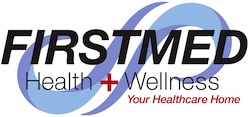Regular doctor’s visits are the most important part of monitoring the growth and development of children from infancy to adolescence through mental marks known as milestones. Milestones are actions or mental leaps that mark a significant change or stage in development. A crucial part of understanding how a child is developing and identifying children who are at risk of not meeting their milestones is developmental surveillance, done in addition to screenings to identify children with developmental disabilities. At each well-child visit, your child’s doctor will ask a series of questions that establish the progress of their growth and address any concerns that you or your provider may have. So, what does the process of developmental surveillance look like from early childhood to adulthood?
Developmental Surveillance
Developmental Surveillance is the process providers use to establish whether a child is at risk for developmental delays. This process should be carried out at every well-visit and includes questions regarding progress and addressing any developmental concerns, including:
- Discussing parent’s concerns
- Reviewing developmental checklists and developmental history
- Observing, talking, or playing with the child during the visit
- Identifying strengths and risks
- Documenting findings
- Sharing results with other providers such as early childhood educators
Developmental monitoring is a regular part of all pediatric clinical encounters. Following basic surveillance questions, screening may be done to assess and diagnose the 1 in 6 children aged 3-17 that have developmental disabilities. Developmental disabilities and delays affect everything from how children play and move to how they speak and act. Unfortunately, most children with delays aren’t identified until after they are in school. Because of this, clinicians should pay special attention to the 4 and 5 year-old well-visits to monitor developmental progress before children begin elementary school. Surveillance practices can also be used in school offices. Developmental surveillance is an important part of connecting children with the right resources and services for early intervention. Nationally, only 17% of children under the age of 5 receive services for their developmental delays and of those children, large numbers of children under 3 years-old who are presumed eligible for early intervention are not enrolled. Therefore, providers with concerns about development are encouraged to follow surveillance procedures with screenings.
Milestones
First steps, waving, and first words are all examples of developmental milestones. Milestones track how your child is developing in their play, learning, movements, actions, and words. Parents, guardians, family members and early childhood providers can participate in developmental monitoring. According to the CDC, these milestones can serve as a checklist for monitoring the progress of your child’s growth.
Developmental Screening & Evaluations
Developmental screening is a closer look at how your child is developing. Standardized testing, checklists and questionnaires are used to monitor behavioral and developmental progress. These are research-based tests that ask questions about your child’s behavior, reactions and emotions, language, movement, and development that can be performed by clinicians, healthcare professionals, early childhood educational teachers, and in other school settings. This process is more formal than developmental monitoring and is usually only performed following concern from your child’s provider based on a comprehensive review of developmental milestones. Additional screening may also be recommended for children at a higher risk of developmental delays due to premature birth, low birthweight, or other factors like environmental risks. The American Academy of Pediatrics (AAP) recommends developmental and behavioral screening for all children during regular well-visits at:
- 9 months
- 18 months
- 30 months
The AAP also recommends that all children be screened for autism spectrum disorder (ASD) during regular well-child visits at 18 and 24 months. If screening tools identify areas of concern, a formal developmental evaluation may be recommended. This type of evaluation is usually performed by a specialist, such as an occupational therapist, speech-language pathologists, child psychiatrists, or developmental pediatricians. The results of a developmental evaluation determine whether a child needs special treatments, early intervention services, or both. Your childcare provider can also be a valuable source of information on how your child develops. At FirstMed Health and Wellness, we offer primary care and mental and behavioral health services for children and adults of all ages. Find out more at FMHWC.org or call (702) 731-0909 to make an in-person or virtual appointment today.
Sources:
American Academy of Pediatrics, (2022, November 14). Developmental Surveillance and Screening. AAP. Retrieved December 27, 2022, from https://www.aap.org/en/patient-care/developmental-surveillance-and-screening-patient-care/
National Center on Birth Defects and Developmental Disabilities, Centers for Disease Control and Prevention, (2022, November 25). Developmental Surveillance Resources for Healthcare Providers. Centers for Disease Control and Preventions. Retrieved December 27, 2022, from https://www.cdc.gov/ncbddd/actearly/hcp/index.html
Stein, Martin, et al. (2009) Developmental-Behavioral Pediatrics (Fourth Edition). Science Direct. Retrieved December 27, 2022, from https://www.sciencedirect.com/topics/psychology/developmental-surveillance
National Center on Birth Defects and Developmental Disabilities, Centers for Disease Control and Prevention, (2022, December 22). CDC’s Developmental Milestones. Centers for Disease Control and Preventions. Retrieved December 27, 2022, from https://www.cdc.gov/ncbddd/actearly/milestones/index.html
Category: Child and Adolescent Health
